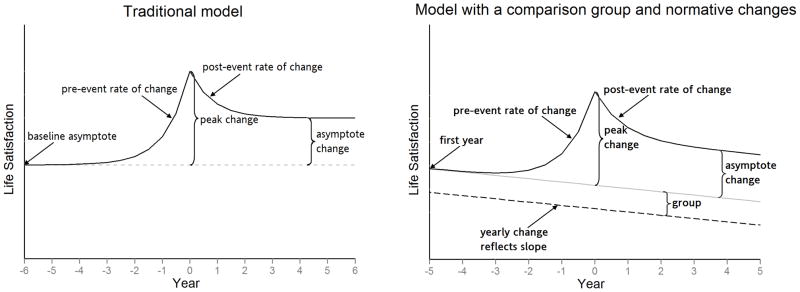Figure 1.

Examples of the traditional nonlinear model (left panel) and the model that includes a comparison group and models normative changes of life satisfaction over time (right panel). All within-person model parameters are shown. Solid black lines represent predicted life satisfaction trajectories for people who experienced a life event; the dashed black line shows the trajectory of the comparison group. The solid gray line shows what the trajectory of people who experienced an event would be if they had not experienced the event but had the same initial life satisfaction. Year 0 is the year in which the event occurred.
